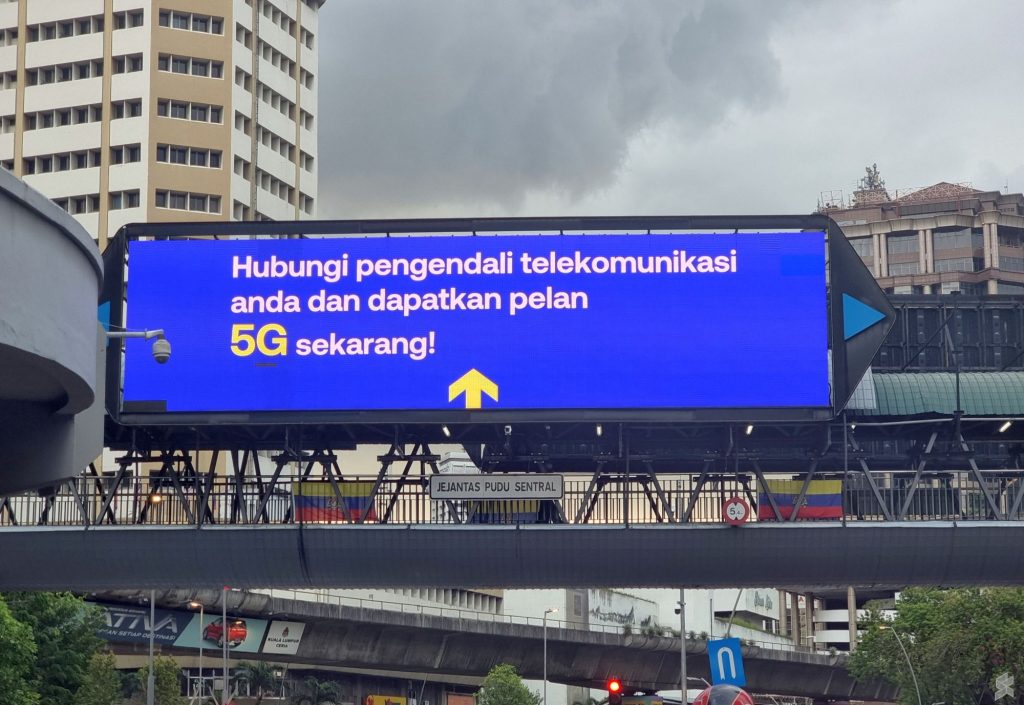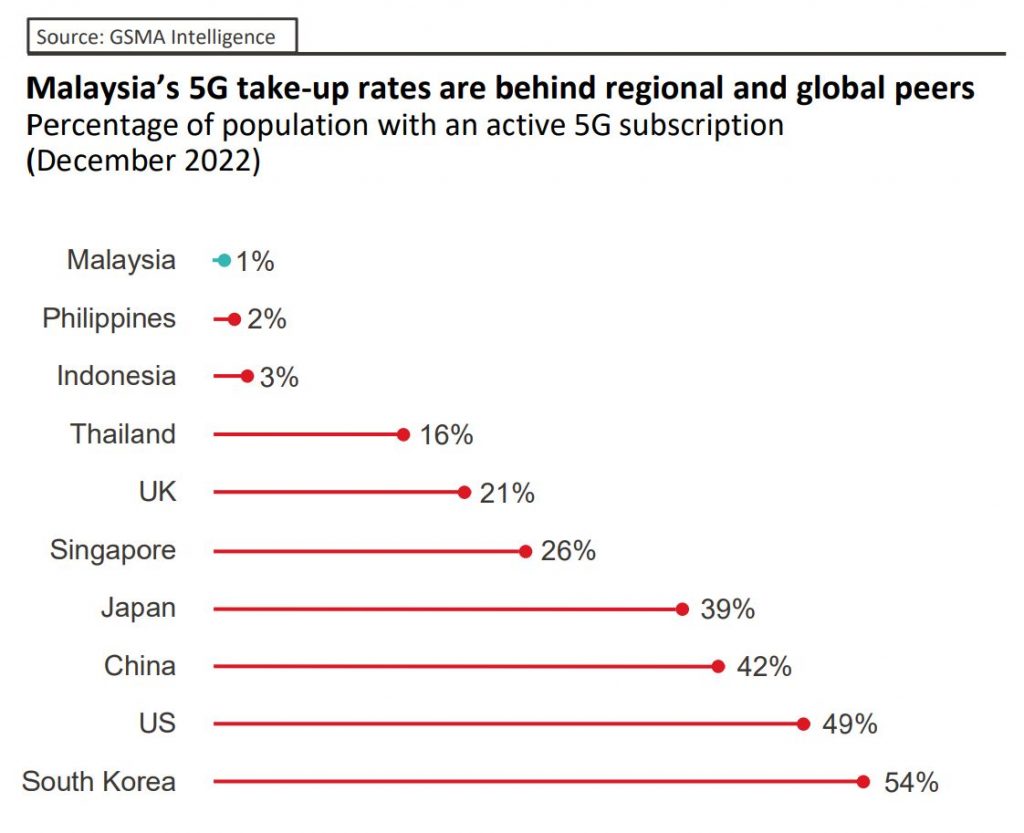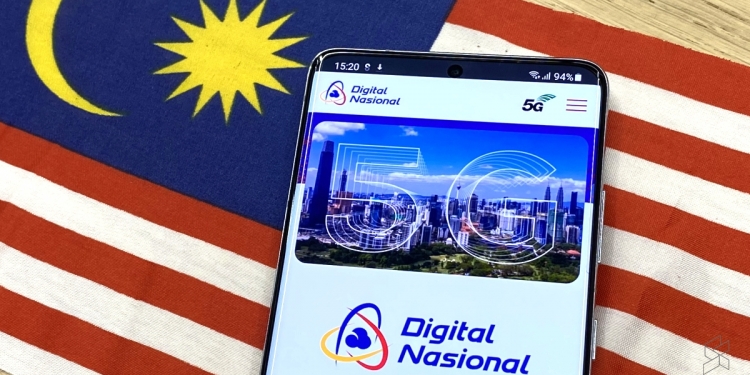During today’s JENDELA Phase 1 wrap-up, the Malaysian Communications and Multimedia Commission (MCMC) revealed that Malaysia’s 5G adoption rate is still low despite having 59.5% 5G population coverage as of 30th April 2023.
As shared by MCMC COO Dato’ Mohd Ali Hanafiah Mohd Yunus, there are currently about 1.2 million users which translates to about 3.1% 5G adoption rate. He believes that the adoption rate will pick up once there’s more coverage, more sites being onboarded and when there are more affordable 5G devices being introduced to the market.
Under the current administration, the government is expediting the 5G rollout to achieve 80% 5G population coverage by the end of 2023. This is one year ahead of Digital Nasional Berhad’s (DNB) original timeline to achieve 80% 5G population coverage by the end of 2024.

Last month, the Communications and Digital Ministry led by Fahmi Fadzil announced the country’s transition from a Single Wholesale Network to a Dual Network model in 2024. A second 5G entity will be introduced after DNB achieves its 80% 5G population coverage. Following the announcement, CelcomDigi, Maxis, TM and U Mobile have expressed support for the government’s decision to have two networks in the country as having dual 5G networks will heighten market competition, leading to better network infrastructure performance and raise customer service levels.

To ensure a smooth transition towards Dual Network, the Communications and Digital Ministry has announced the formation of a new 5G Task Force chaired by the Chief Secretary of the Treasury and the Secretary-General of the Communications and Digital Ministry, and managed by the Malaysian Communications and Multimedia Commission (MCMC). The task force will also include representatives from DNB and various service providers.
At the moment, five telcos are offering 5G through wholesale agreements with DNB. Despite terminating the equity deal with DNB last month, CelcomDigi and TM customers can still continue to enjoy 5G services as the 5G access agreement with the single wholesale network remains intact.

GSMA Head of Asia Pacific Julian Gorman told us in an interview that the true success of 5G isn’t population coverage. He shared that population coverage is a KPI of the past when mobile generations were very consumer-driven. While the aim to roll out 5G to reach 80% population coverage is admirable, he said the priority should be looking at adoption, innovation and use cases that can transform the industry.
Malaysia’s 5G adoption rate was at 1% as of the end of 2022 which is behind its regional peers including the Philippines, Indonesia, Thailand and Singapore.
Related reading
- MCMC COO: Private entity to take over Digital Nasional Berhad after 80% 5G population coverage achieved
- Fahmi announces 5G Task Force to ensure smooth transition towards Dual Network model in Malaysia
- Fahmi: DNB’s 5G coverage is at 59.5%, CelcomDigi and TM’s SSA terminations won’t impact implementation








